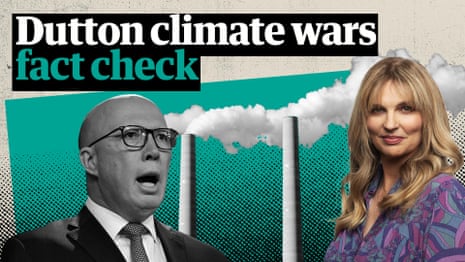Australia’s coal fuel sales ranked second only to Russia in climate damage and has no plans to cut back
Australia’s coal and gas exports cause more climate damage than any other country in Russia, according to a new study that argues the country is flouting a global deal to move away from fossil fuels.
The analysis, commissioned by the Human Rights Center of the University of New South Wales, found Australia to be the third largest exporter of fossil fuels by 2021, behind only Russia and the US.
Australia took second place due to production. It has won the US due to the majority of Australia’s exports being coal, the most productive fuel.
It meant that while Australia emitted only about 1% of global emissions, it was tied for about 4.5% once its imports were accounted for.
The report, by non-profit science and policy organization Climate Analytics, said that based on the government’s forecast, Australia’s fossil fuel exports are expected to remain at current levels until at least 2035 when continues to accommodate new coal and gas development.
Climate Analytics chief executive Bill Hare said this was inconsistent with a number of international commitments Australia had made, including a call supported by nearly 200 countries at the Cop28 climate conference which was held in Dubai in December to transition the world away from fossil fuels. “accelerating action in this decade”.
“Yet here we have an Australian government committed to a deliberate policy that will see its gas imports, sending out billions of tonnes of emissions, inconsistent with achieving net zero , and it is completely inconsistent with the science of this matter,” he said.
Dr Gillian Moon, climate responsibility project leader for the Australian Human Rights Centre, says it is shocking that emissions from Australia’s coal assets are around 30bn of CO.2 in the 63 years since 1961 and this was expected to increase by 50% between now and 2035.
He said the country is continuing on this path even though it is more vulnerable to the effects of the climate crisis than other countries. “We have a home [emissions reduction] purpose, but nothing in our foreign goods. We export 91% of our coal and almost a third of our gas, and we have no plans to get out of this business,” he said. “The Australian public deserves to know the truth about this. and the consequences for us.”
Moon said if Australia was serious about its climate commitments, it should do more to encourage countries that bought its fossil fuels – particularly the advanced economies of Japan, South Korea and Taiwan take two-thirds of its imports – to move quickly. renewable energy. He said it should have similar discussions with like-minded fossil fuel exporters, such as Canada and Norway.
He said it is surprising that there is no discussion about the production of fossil fuels at the global climate meetings held at the end of each year. He said: “We need to discuss how we will deal with this matter.
after the news release
The analysis found that if the world community were to fulfill the main goal of the Paris climate agreement – that countries will try to limit global warming to 1.5C – the emissions from fossil fuels are will need to be reduced by 64% by 2035.
The report also states:
-
Australia’s coal fuel imports by 2023 could lead to 1.15bn tonnes of CO2 – almost three times more than domestic emissions.
-
The country was responsible for 52% of the world’s metallurgical coal exports and 17% of the world’s thermal coal exports in 2022. Metallurgical coal is used to make steel, coal is used for power generation.
-
Australia has more than doubled its natural gas export capacity in the five years to 2020, adding 62m tonnes a year.
-
Only 19% of Australia’s natural gas production is used domestically. The rest was exported or used as energy by foreign industry.
-
Australian governments and regulators had continued to issue permits for new large gas production and LNG export projects in 2021 and 2022. This appeared to contradict the map of trends released by the International Energy Agency, which found that global gas consumption should decrease 18-22% in 2030 and 47-53% in 2035 compared to 2022 levels.
Australia’s resources minister, Madeleine King, last month announced that the government would grant nine licenses to six companies – four to Esso and one each to Beach Energy, Woodside, Chevron, Inpex and Melbana. – exploring new gas sources from the west of the country. southeast coast.
Information published by the Guardian this week found that Australia’s proposals were part of a new oil and gas probe by wealthy democracies – including the US, the UK and Canada – that threatened to produce up to 12bn of global warming and undermining country and country. global climate commitment.
A recent report by the Center for Energy Economics and Financial Analysis, a think tank, challenged suggestions that Japan needs Australian gas to maintain its energy. It said demand for gas in Asia had fallen by 25% in the past decade and the country was selling more LNG overseas than it was buying from Australia.
#Australias #coal #fuel #sales #ranked #Russia #climate #damage #plans #cut
